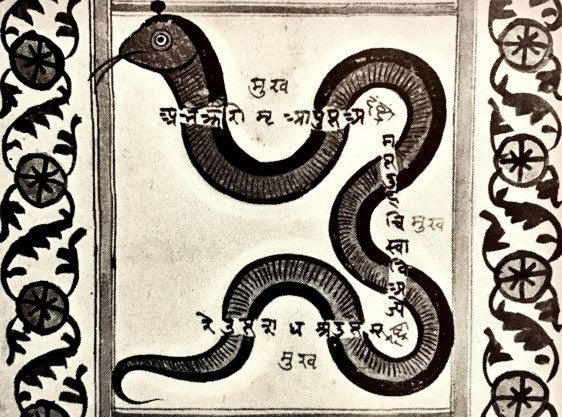Yoga is an ancient practice involving discipline, body postures, concentration, enlightenment, and more. Originally created for spiritual development to attain physical and mental health, Yoga holds a thousand years of long, rich history.
The history of Yoga dates back to 5,000 years. This sacred art form is believed to have originated in ancient India. It was later adopted by different countries in a variety of different ways and has been passed down from generation.
Let’s explore a brief history of Yoga in Asian and Western Cultures in this blog and delve deeper into yogic philosophy!
Table of Contents
The Origin of Yoga
The 8 Ashtangas of Yoga
- Yama: Rules of Behaviour
- Niyama: Self-Discipline
- Asana: Body Posture
- Pranayama: The Art of Breathing
- Pratyahara: Mastery of The Senses
- Dharana: Concentration
- Dhyana: Meditation
- Samadhi: Enlightenment
The European History of Yoga
Brief History Of Yoga in The United States
Current Yoga Trends
Closing Words
FAQs
- What is the history of yoga?
- What are the eight limbs of yoga?
- What are the spiritual benefits of yoga?
- Historically, are there any other cultures that practice yoga besides India?
The Origin of Yoga
The Vedic texts, originated from Indo-Germanic culture, were created between 3000 and 300 BC and expressed in four founding texts, the truths revealed to great masters of the primordial age. According to a seal found at that time depicting a person in a yoga posture, the tendency is to date the origins of Yoga around 2000 B.C. These practices are postures, rituals, and prayers (mantras) that are transmitted orally and evolve with time and their cultural environment.
From 700 B.C., we come across the Upanisads, collections of philosophical texts with a central theme: the fundamental concept of a universe centered around a higher and eternal consciousness. Yoga from this period is called Pre-Classical Yoga.
The Bhagavad Gita, which is part of the famous Hindu national epic, the Mahabharata, develops clearer ideas about Yoga and includes descriptions of 18 forms of Yoga, such as Bhakti Yoga or Mantra Yoga.
It was when traditions took shape, and we distinguished six basic philosophical systems, the Darshanas, of which Yoga and Sâmkyha are part of. Here, Yoga is described as a method of the liberation of the whole being, and Sâmkyha, in close relation to Yoga, is an evolutionary theory dealing with the imprisonment of the mind and its possible emancipation.
Inspired by these two primal texts, the first fundamental text, the Sutras of Patanjali, appears between 200 BC and 500 AD (without any precise date). It is the basics of what we call Classical Yoga in the modern period. The 195 stanzas or aphorisms give a guideline by defining eight aspects (Ashtanga) of Yoga practice.
The 8 Ashtangas of Yoga
- Yama: Rules of Behaviour
- Niyama: Self-Discipline
- Asana: Body Posture
- Pranayama: The Art of Breathing
- Pratyahara: Mastery of The Senses
- Dharana: Concentration
- Dhyana: Meditation
- Samadhi: Enlightenment

1. Yama: Rules of Behaviour
Yama represents a series of ethical rules within Yoga philosophy. The five different yamas described by Yoga Sutra are ahimsa (non-violence), Satya (truthfulness), asteya (non-stealing), aparigraha (non-possessiveness), and brahmacharya (fidelity).
2. Niyama: Self-Discipline
The Sanskrit word niyama means “rules”. The niyamas and their complement, the Yamas, are Yoga’s prescribed practices and activities for spiritual enlightenment and healthy living.
3. Asana: Body Posture
Yoga asanas are physical postures or poses that strengthen the body’s joints, ligaments, and muscles and hence help improve strength, flexibility, and balance.
4. Pranayama: The Art of Breathing
Pranamaya is an art of breathing used to regulate one’s breath. It is a Sanskrit word made up of ‘Prana’ and ‘Yama,’ which signify life energy and control.
5. Pratyahara: Mastery of The Senses
Pratyahara is the fifth limb of Yoga and is a foundation for meditation. It is one of the least known yoga practices. The meditation practices in Pratyaha assist master all five senses. It provides the necessary skills to filter out external stimulation.
6. Dharana: Concentration
In Sanskrit, Dharana means “concentration”. The practice of Dharana practice helps to focus your mind on a single item, place, or concept. This is the sixth limb of yoga Ashtanga, narrower in scope than Dhyana.
7. Dhyana: Meditation
The word Dhyana is derived from two Sanskrit words: “dhi” (mind) and “yana” (movement). Dhyana, unlike Dharana, entails complete immersion. Dhyana translates to meditation which connotes a state of deep serenity.
8. Samadhi: Enlightenment
Samadhi is the highest state of consciousness in which individual and universal consciousness unite.
Easy to read but less easy to fully understand, these aphorisms inspire thought, discussion, and meditation. Their knowledge is part of the practitioner’s “must”! Tantrism was developed around 500 AD in a rather anarchic way in the North of India.
It is a kind of counter-current to the Hindu normative system, which was based on practice and oral transmission. Tantra is a mystical way to value the body and conceive it as a container of divine energy. At the same time, the feminine aspect is highly valued. In this context, the practice of Kundalini-Yoga and Tantra-Yoga developed while taking into consideration the balance of Shiva/Shakti Male/Female energies.
Around 800 AD, Hatha-Yoga was focused on developing the body, becoming more important. The text that defines it is Hathayoga Pradipika, another “must” for the novice.
The European History of Yoga
Around 1000 AD, Al-Biruni, an Arab philosopher and scholar, translated the Sutras of Patanjali into Arabic, allowing this text to spread in the Middle East. These teachings, as well as certain Tantric techniques, had an influence on yogic practices in Sufism.
Later, Sufism influenced European mysticism, and it is interesting to observe the similarities between the symbolism of the illustrations from chemistry and illustrations related to Yoga or Tantrism.
 The European travelers and missionaries of the 16th century remain rather spectators of an incomprehensible India and make no distinction between true spiritual quest and fakirism. It was only towards the end of the 19th century that the Western world opened itself up to Indian and Eastern thinking.
The European travelers and missionaries of the 16th century remain rather spectators of an incomprehensible India and make no distinction between true spiritual quest and fakirism. It was only towards the end of the 19th century that the Western world opened itself up to Indian and Eastern thinking.
Among the masters who most influenced Europe were Sri Aurobindo, Swami Vivekananda, Maharishi, and Sivananda. Western psychological research began to take an interest in oriental visions. In the 1930s, Carl Gustav Jung gave his famous lectures on Kundalini Yoga. Nevertheless, we are at the beginning of a process, and interpretations are not always made in the right direction. With the student movements in the 60s, Yoga really took off and developed as a meditative discipline in Europe.
Brief History Of Yoga in The United States
At the beginning of the 20th century, Swami Vivekananda, Paramahansa Yogananda, and Indra Devi were among the first masters to travel to the United States to teach and transmit Yoga and its philosophy. In the ’60s and ’70s, they were followed by masters such as Muktananda and Desikachar, Pattabhi Jois, and Iyengar, to whom Ashtanga-Yoga and Iyengar-Yoga are owed.
Yogi Bhajan, the founder of Sikh Dharma, is also among these masters and is responsible for the teaching of Kundalini-Yoga Today, in the United States and Canada, there are many centers, schools, and activities with a predominant interest in physical Yoga. Power (Ashtanga) Yoga is currently all the rage, but one can also find quirks such as Doga, dog Yoga, etc.
Current Yoga Trends
Westerners slowly start to appropriate Yoga culture. Even if our mentality and traditions are still deeply rooted in a Judeo- Christian culture, the openness to the world confronts us more and more with diverse belief systems, and the mixtures are made without too much hesitation. However, basic knowledge of various belief systems and philosophies is required to avoid confusing amalgamations!
Nowadays, the practice of Yoga provides an appreciated substitute to our religions that are frozen in traditions that have become meaningless. As a matter of fact, Yoga can be experienced as a complement to any religion and allows a concrete and viable approach to the ultimate reality. For those who do not feel themselves at ease with any religion, Yoga allows living one’s own spirituality through experience.
The last decay has seen a worldwide explosion with millions of practitioners in Yoga of all varieties but with a predominant tendency to the Hatha (physical exercise based) Yoga practice. Even India has been touched by the Western Yoga Tsunami and became again aware of this treasure rooted deeply in ancient Indian tradition.
Closing Words
I hope this yoga history will be useful to you, but please keep in mind that it summarises a much richer and more complex story. I hope it will inspire you to learn more about the history of Yoga from ancient to modern times.
At Breath of Fire, we have long integrated Yoga as a philosophy of life and art of living. All of our clothing is created with this in mind.
Please drop your thoughts on this blog in the comment section below!
Be in your strength – Lia.
FAQs
What is the history of yoga?
Yoga is a Sanskrit word derived from the term "Yuj" meaning "to unite". It is an art form consisting of breathing techniques, meditation, proper diet, and body postures. Yoga is believed to have originated in Northern India during the Indus Civilization over a few 5,000 years ago.
What are the eight limbs of yoga?
The term Ashtanga comprises two Sanskrit words, "Ashta" meaning eight, and "Anga" meaning limbs, and refers to the eight limbs of yoga. Ashtanga is the classification of classical yoga that serves a set of principles for living a meaningful and purposeful life.The ashtangas in yoga are Yama, Niyama, Asana, Pranayama, Pratyahara, Dharana, Dhyana, and Samadhi.
What are the spiritual benefits of yoga?
Yoga is the art and science of living a healthy lifestyle. It spiritually benefits a yoga practitioner by bringing harmony between mind and body. Some of the spiritual benefits of yoga are improved focus, boost in confidence, mental peace, self-regulation, and higher consciousness.
Historically, are there any other cultures that practice yoga besides India?
The term yoga comes exclusively from the East. Still, yoga was also practiced by Buddhist ascetics, such as the Böns in Nepal, Tibet, and other countries, but also by Christian or Muslim ascetics such as the Sufis. Numerous physical practices are found beyond cultures because man has sought at all times and in all religions to rise and transcend his materiality and temporality.






